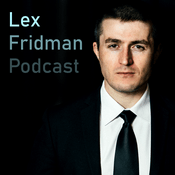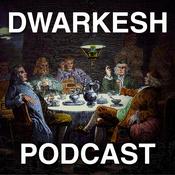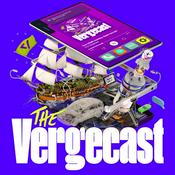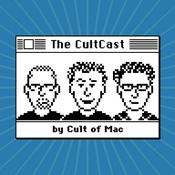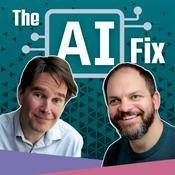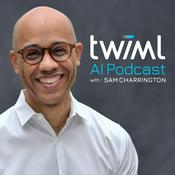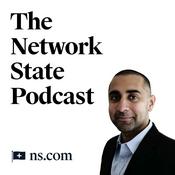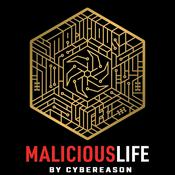11 episodes

Leading engineering in a changing world: people, systems and AI Guest
08/10/2025 | 46 mins.
Send us a textEpisode summaryWhat happens when AI shifts not just how we build systems, but how we lead people?In this episode, Chris Davies is joined by James Ross, CTO for SEEK across Asia Pacific. They explore what’s changing (and what isn’t) about leading engineering teams in a world of increasing complexity, scale and generative AI. James shares his personal journey from developer to tech exec, his philosophy on leadership, and where he sees AI unlocking real change; not just in tools, but in how value gets created.They also talk about trade-offs, trust, fast feedback loops, and why engineering leadership today is as much about helping people navigate ambiguity as it is about making technical decisions.Guest bioJames Ross is the Chief Technology Officer for SEEK across Asia Pacific. With a background in software engineering, architecture and product development, he’s led teams from scale-ups to large enterprises. Before SEEK, James was VP Engineering at Envato. He’s passionate about enabling others, building technical cultures of trust, and helping engineers do their best work, even when the ground is shifting beneath them.Key takeaways1. From dev to CTO: leadership as a shift in mindset[04:36] James shares his career journey and why becoming a leader wasn’t a single decision, it was about following the work that felt meaningful.[06:30] He reflects on letting go of technical depth as your sole source of value, and learning to lead through others.[08:05] The hardest part? Shifting from doing to supporting and optimising for impact, not output.2. Building high-trust teams in high-complexity systems[11:02] James describes how SEEK’s engineering team is structured and what leadership looks like at scale.[13:42] Chris and James discuss the role of clarity in complex systems—and why high autonomy needs strong shared context.[16:40] Leadership isn’t about controlling outcomes; it’s about creating environments where others can thrive.3. AI is reframing the role of engineering[18:14] James unpacks how AI is changing engineering trade-offs, from speed and observability to system safety.[22:50] SEEK is experimenting with AI across architecture, code, and process, but sees it as an amplifier, not a silver bullet.[25:10] Chris poses the big question: what makes a great engineer now? James reflects on curiosity, communication and judgement.4. Generalists, fixers and the future of engineering roles[28:17] James explores whether AI is shifting team dynamics, do we need fewer specialists, or just different kinds?[30:12] They talk about the emerging “Fixer” role, someone who can make sense of the AI-generated mess and restore order.[32:44] Complexity isn’t going away. But AI is changing how we navigate it, and who does the navigating.5. AI as both catalyst and constraint[36:23] James shares SEEK’s internal approach: fast feedback cycles, embedded AI teams, and collaborative exploration.[39:48] It’s easier than ever to try new things, but harder to choose the right ones. The challenge is filtering signal from noise.[42:51] James reflects on how AI has changed his own thinking as a leader: the bar for quality hasn’t lowered, it’s just moved.Resources and linksLearn more about SEEK’s engineering cultureFollow us on Instagram, TikTok and YouTube.

Leading with customer clarity in a changing world
30/06/2025 | 49 mins.
Send us a textIn this episode, host Kavita Kerwar speaks with Yann Burden, growth strategist and startup founder turned Chief AI Officer at Pendula, about the leadership lessons from navigating complexity and change.Yann shares what it takes to lead when the path isn’t clear, the market isn’t ready, and the idea hasn’t quite landed yet. He talks about using customer clarity to cut through complexity, building belief when outcomes are uncertain, and why bold experimentation only works when others are willing to follow.This is a conversation for anyone driving change without a roadmap, and looking for ways to move forward with focus and impact.1. Customer clarity as compass Even in moments of ambiguity, customer needs can provide focus and direction.[08:53] Anchoring decisions in what truly matters to customers[12:38] Building customer trust wasn’t idealistic, it was essential in a low-trust, high-switching-cost industry[16:23] A relentless focus on customer value helps cut through internal debates and competing priorities2. Building before the market’s ready The biggest lessons came from solving unseen problems. [19:35] Billcap was built to make energy data useful, before retailers had the tools (or appetite) to use it[21:56] Staying mission-driven gave the team staying power when the pace of market adoption lagged behind their vision[24:43] “If someone’s hair’s on fire, they’ll use a brick to put it out”. True product-market fit means urgency, not perfection3. Turning insight into action Ideas are easy. Driving alignment to bring them to life is the hard part.[28:53] At Pendula, using AI for reporting meant aligning product, commercial, and data teams around something still evolving[31:06] Gen AI raised expectations, but success came from scoping carefully and managing belief internally[34:10] No matter how promising the tech, change only sticks when the organisation is ready for it4. Learning to let go Leadership evolves when switching from founder to executive.[38:28] How to influence without formal authority, and why trust is the real currency[40:50] Know when to push and when to pivot, there’s no universal playbook[42:55] Every role has called for a different version of himself, adaptability has been the throughline5. Wrap-up & reflections[45:16] Advice for leaders building in uncertain environments: Don’t wait for clarity, create it[47:05] Ambiguity isn’t the enemy; it’s a signal you’re doing something new[48:28] Solving meaningful problems, momentum, and good peopleResourcesThe “hair on fire” analogy comes from Michael Seibel at Y Combinator. It captures true product–market fit: if someone’s hair is on fire, they’ll even use a brick to put it out. Conversations with Tyler podcast99% Invisible podcastThe Victorian InternetFind YannLinkedInFollow us on Instagram, TikTok and YouTube.

From Startups to Enterprises: Leadership Lessons from a Career in Tech
16/06/2025 | 40 mins.
Send us a textEpisode introductionCareers don’t always follow a straight line, and for Jessica Lin, the detours have been the most rewarding part. In this episode of The Tech Trajectory, she joins host Kavita Kerwar to share what she’s learned from leading through change, jumping into unfamiliar industries, and building teams that thrive under pressure. From managing cultural shifts to overcoming imposter syndrome, Jessica offers practical advice on how to embrace uncertainty, back yourself in, and grow as a leader. And yes, there’s a game of Jenga, because leadership is as much about balance and bold moves as it is about strategy.Guest bioJessica Lin is Executive Manager of Retail Technology – Digital Core Experiences at Commonwealth Bank. With leadership roles at AWS, Airbus, Qantas and Linktree, Jessica has led diverse technology teams through rapid growth, transformation, and cross-industry transitions.Episode summaryIn this candid and insightful conversation, Jessica reflects on the mindset that’s helped her embrace career pivots with curiosity rather than fear, and how she’s adapted her leadership style across vastly different environments from nimble startups to global enterprises. She shares how she challenges her team to think bigger and take ownership, what she learned from her most difficult role abroad, and how she’s worked through imposter syndrome. Jessica also breaks down the difference between mentorship and sponsorship, and why both matter in shaping a career. Along the way, she offers real stories, practical advice, and one very relatable Jenga metaphor, reminding us that leadership isn’t about having all the answers, but being open to growth.Key takeaways1. Embracing change through curiosity[02:50] Career shifts can be opportunities, not setbacks.[03:50] Transferable skills like leadership and adaptability build confidence in new environments.[05:50] Curiosity and asking questions often lead to support, not resistance.2. Adapting leadership to context and scale[07:05] Startups need fast decisions and risk-taking; large organisations require structure and alignment.[08:55] Clear direction and adaptability add value in any setting.[09:40] Stretch goals and support help teams step up.[11:00] Innovation happens when challenge is balanced with care.3. Navigating setbacks and building resilience[13:10] Not every role is the right fit—honesty protects wellbeing.[14:40] Cultural awareness is just as important as technical skill.[16:00] Letting go of pride can unlock deeper growth.4. Redefining confidence and communication[18:10] Imposter syndrome often stems from comparison, especially around communication style.[19:50] Feedback reframed quietness as a leadership strength.[20:30] Leadership impact doesn’t require being the loudest voice.5. Growing through others—mentorship and sponsorship[24:10] Sponsors push for opportunities behind the scenes.[27:10] Mentors help shape direction and decisions.[31:30] Come prepared—clear goals make mentorship more valuable.ResourcesHow I Built This PodcastCoursera Where to find Jessica Lin LinkedIn: Jessica LinFollow us on Instagram, TikTok and YouTube.

Unifying the Vision: Aligning Tech and Business to Drive True Transformation
02/06/2025 | 48 mins.
Send us a textIn this episode of the Tech Trajectory Podcast, host Chris Davies sits down with John Sullivan (Sully) to explore what it takes to lead large-scale transformation, without losing sight of people, purpose, and impact.Sully shares his journey from engineer to CEO, and how listening to customers and translating business needs into tech outcomes became a career-defining shift. From OKRs to flywheels, ride-alongs to data dashboards, this episode is packed with practical stories and clear-headed thinking on how to get alignment, and why buzzwords are no substitute for intent.Whether you’re scaling a startup, transforming a product team, or simply trying to get business and tech to speak the same language, this one’s for you.1. Tech strategy is business strategy[02:00] Sully shares how his early experience riding along with sales teams helped him shift from building for tech’s sake to solving business problems with tech.2. Why OKRs changed everything at Chargefox[08:30] In a post-acquisition pivot, Sully introduced five company-wide OKRs to align teams and give structure to a newly evolving software business.3. Driving transformation with data and purpose[15:00] From dashboards to Python scripts, Sully doubled down on making data accessible and meaningful—building alignment from the numbers up.4. Leading with intent (and ditching buzzwords)[21:00] You won’t hear Sully say “data-led” or “people-first,” but you’ll see it in his actions. He shares why clarity of intent matters more than corporate speak.5. Navigating the personal side of transformation[23:30] Whether it’s changing operating models or growing teams, Sully breaks down why true transformation is always personal—and why setting the ‘stall’ is essential.6. What doesn’t work (and what surprised him)[28:00] Not every team needs Agile. Sully challenges blanket transformation methods and shares what really made a difference across business functions.7. From chaos to clarity: lessons in leadership[32:00] As a CEO, Sully reflects on loneliness, switching leadership styles, walking the walk, and how a “why” mindset can be both a superpower and a headache.8. Defining success and building flywheels[38:00] Sully explains how Chargefox moved from a vague directive (“become a software business”) to a platform strategy, accelerants, and a flywheel that made it all work.Where to find John Sullivan:LinkedIn: John SullivanFollow us on Instagram, TikTok and YouTube.

Leading on Your Terms: Redefining Ambition, Flexibility & Impact
19/05/2025 | 43 mins.
Send us a textIn this episode of The Tech Trajectory Podcast, host Kavita Kerwar sits down with Karis Dorrigan to explore what leadership looks like when driven by clarity, values, and life’s changing seasons.From negotiating for flexible work to growing through career transitions and motherhood, Karis shares her journey with candour. She speaks about how to lead with both empathy and commercial focus, why inclusive product teams matter, and the value of redefining success on your own terms.You’ll hear advice on part-time leadership, the impact of mentorship, and what businesses can do to truly support diverse teams and individuals—not just on paper, but in practice.1. Flexibility doesn’t mean less ambition[03:00] Karis discusses working part-time in a senior leadership role—and how she reframed flexibility as a strength, not a sacrifice.2. Making work work, for people and life[06:15] Teams thrive when flexible work is seen as a competitive edge. Karis shares practical actions to make part-time and remote employees feel valued.3. Redefining leadership through motherhood[09:00] Parenthood shifted Karis’s leadership style, grounding it in empathy, prioritisation, and purpose.4. Navigating big career transitions[15:00] Karis reflects on leaving high-profile roles, listening to your instincts, and designing a career that aligns with your values.5. Leading inclusive product teams[21:00] Inclusion starts at the strategy stage. Karis shares how she builds empathy into team culture and product decisions.6. Mentorship and giving back[24:00] From being mentored to mentoring others, Karis champions honest conversations, advocacy, and opening doors.7. Advice for future leaders[27:00] Karis closes with reflections on confidence, clarity, and what she wishes she’d known earlier in her leadership journey.Where to find Karis DorriganLinkedIn: Karis DorriganFollow us on Instagram, TikTok and YouTube.
More Technology podcasts
Trending Technology podcasts
About Tech Trajectory
Listen to Tech Trajectory, Lex Fridman Podcast and many other podcasts from around the world with the radio.net app
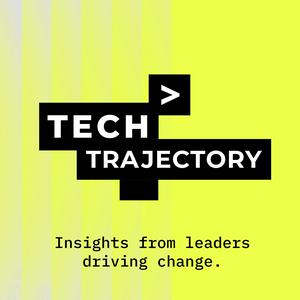
Get the free radio.net app
- Stations and podcasts to bookmark
- Stream via Wi-Fi or Bluetooth
- Supports Carplay & Android Auto
- Many other app features
Get the free radio.net app
- Stations and podcasts to bookmark
- Stream via Wi-Fi or Bluetooth
- Supports Carplay & Android Auto
- Many other app features


Tech Trajectory
download the app,
start listening.
